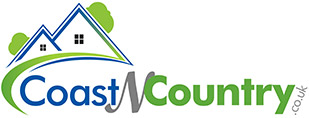News Blog
BUY – TO – LET: A Beginners Guide
So, you want to become a landlord? Great! Buy To Let Property is a solid investment and an excellent way to supplement your income. But there are some important considerations to make before jumping in…
1. Figure out what type of tenants you want – This will help you decide where and what type of property to buy – Students, families and young professionals all have different requirements for a property
a. Students – produce a higher yield – but want more central locations, require more upkeep, and have shorter-term contracts
b. Families – longer term, less maintenance – but want larger properties with outside space, near good schools – lower yield
c. Young professionals – similar requirements to students – but lower yield than students, longer terms
2. Figure out your costs – Buy-to-let has more costs than traditional home ownership
a. BTL mortgage rates – generally higher than traditional mortgage – larger deposit (typically 25%)
b. Stamp Duty – BTL properties have a higher stamp duty and depends on the value of the property – use this Stamp Duty Calculator for help.
c. Insurance – Typical homeowners’ insurance won’t cover you if you are renting to tenants. Although there is no legal requirement, landlords are highly recommended to get landlord insurance.
d. Repairs – Homeowners should always expect to pay 1% of their property’s value annually for upkeep, but these costs are always higher in rented properties. Typically, 5% should be enough.
e. Agent fees – Do you want to manage it yourself? There are lots of different agent options from advertise only to fully managed.
f. Utilities – You do not have to pay utilities, but many tenants like the simplicity of having only one bill a month.
g. Taxes – Landlords need to inform HMRC of their rental income and can be taxed on profit.
3. Work out your Rental Yield – this simple formula will help you calculate the potential profitability of a property. A good yield is generally considered anything over 6%
a. Initial Investment amount
b. Determine the annual income generated from the investment (Rent – costs = income)
c. Divide initial investment by income and multiply by 100 ((A/B) x 100 = %)
d. Example:
i. Initial investment: 25% deposit of 200,000 = 50,000
ii. Annual income: 20,800 (rent) – 10,800 (costs) = 10,000
iii. Yield: (50,000 / 10,000) x 100 = 20%
Hope this helps. If you have any questions about becoming a Buy-To-Let landlord, please get in touch at kellie at coastncountry.co.uk! Thanks.

